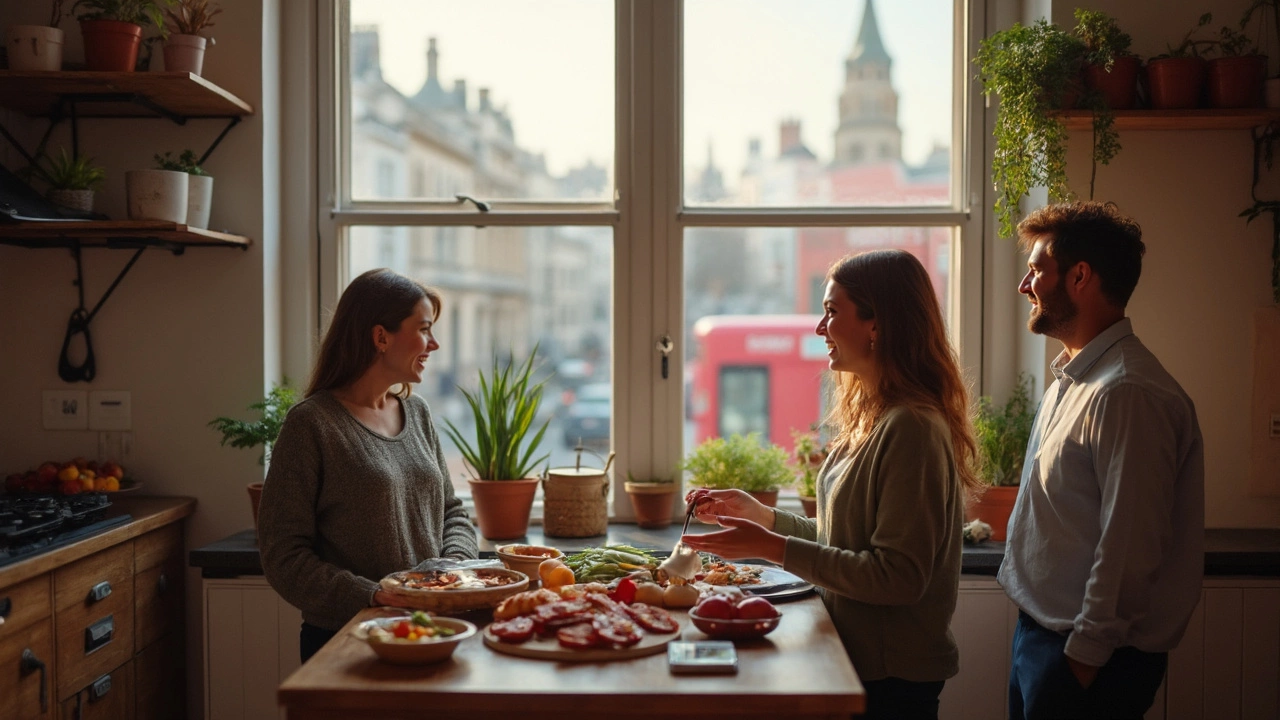Self Catered Residences: The Real Deal on Flexible Stays

If you’ve ever dreamed of enjoying your breakfast in pajamas at noon or cooking up a family recipe after a day of exploring, self catered residences might be your kind of travel hack. Unlike hotels, these places hand over the keys and let you handle meals your way. That means you — not a hotel’s breakfast buffet schedule — get to decide if it’s pancakes at midnight or a simple cup of tea at sunrise.
These options aren’t just for seasoned travelers. Families, road-trippers, remote workers—almost anyone who wants a bit more space and privacy gravitates toward them. Instead of just a place to crash, you get a spot that feels a little more like home, complete with a kitchen, actual living space, and maybe even a backyard for those sunset barbecues.
There’s even more to love: budgeting gets easier when you can whip up your own dinner instead of heading to pricey restaurants every night. And picky eaters? They’re finally off the hook. Self catered residences are all about living on your terms, not someone else’s meal schedule.
- So, What Exactly Is a Self Catered Residence?
- What You’ll Find Inside
- When It Makes Sense to Book One
- Tips to Make the Most Out of Your Stay
So, What Exactly Is a Self Catered Residence?
A self catered residence is a type of holiday accommodation that gives you a private space with its own kitchen and all the basics you need to cook and take care of yourself. You’re not just getting a bedroom—you’ll have access to a living area, bathroom, and usually your own front door. Think of it as borrowing someone’s home, but without sharing it.
The big difference compared to regular hotels is you won’t find room service or daily cleaning staff knocking at your door. You’re in charge of your mealtimes, laundry, and sometimes even your own dishwasher duty. Most self catered stays include things like pots, pans, basic utensils, and even a fridge. Some up the game with washing machines, outdoor grills, or a little garden to sit in.
What actually counts as a self catered residence? Here are some common examples:
- Self catered residences (or self-catering cottages) in the countryside or by the coast, perfect for families and friend groups.
- City apartments you rent short-term, where you get a kitchen and your own set of keys.
- Holiday lodges or chalets, often found at ski resorts or nature parks, where everything’s set up for you to come and go.
- Even student residences sometimes get rented out this way in the summer.
Usually, you pay for the whole space, not by the number of people (up to a maximum limit), which makes them budget-friendly if you’re traveling in a group. Most places expect you to bring your own groceries, but some leave basics like tea, coffee, or milk as a welcome perk. If you spot “self-catering” on any travel site, it’s a sure sign you’re looking at this flexible setup—not a hotel with fixed meal times or strict routines.
What You’ll Find Inside
Step into most self catered residences and you’ll notice one thing off the bat: you’re not living by someone else’s hotel rules. The gear you get depends on the place, but almost all offer you the basics you need for everyday life. Kitchens are the star. Expect appliances like a fridge, oven, microwave, and stovetop. Some even throw in extras like a dishwasher or coffee machine—perfect for keeping breakfast simple and the dishes easier.
You also get kitchenware, which means pots, pans, sharp knives (not those sad butter knives from budget hotels), and plenty of plates, glasses, and cutlery. There’s usually a starter pack of things like tea bags, instant coffee, salt, and maybe cooking oil, but grocery shopping is on you. Don’t be shocked if you even find wine glasses or a cheese grater at some of the fancier places.
The living space is next—there’s almost always a lounge or seating area, a dining table, and room to actually hang out. Free Wi-Fi comes standard in most places. Bedrooms offer proper storage for your stuff, quality bedding, and at least one plug socket near the bed for easy phone charging. Bathrooms tend to stock towels, soap, and toilet paper, though you’ll want to bring or buy the rest of your toiletries.
Some self-catering cottages go beyond the basics. You might score extras like a washing machine, dryer, private patio, or even a hot tub. According to the Association of Self Caterers UK,
“The overwhelming majority of self-catering properties provide more equipment, space, and privacy than standard hotel rooms—making them ideal for families and groups who want to spread out and relax.”
- Kitchen with appliances and cookware
- Bed linen and towels
- Wi-Fi and TV (sometimes with streaming apps)
- Bathroom essentials
- Storage (closets or drawers)
If you’re traveling with kids or planning a longer stay, look for places with laundry facilities—it saves a ton on suitcase space. Pet owners should double-check pet policies and ask about extras like food bowls or enclosed gardens. Above all, self catered residences hand you the key to your own routine, so you can make your stay work how you want.

When It Makes Sense to Book One
There are times when a self catered residence just makes a lot more sense than grabbing a hotel room. If you like the idea of living on your own schedule or you’ve got more than two people in your group, these places start to seriously shine.
Let’s say you’re on holiday with kids or a bunch of friends. Hotels charge extra for each person and often cram you in tiny rooms. In a self-catering spot, you all get proper bedrooms, plus enough space for movie nights and late-night snacks in your own lounge. Forget sneaking food past reception—everything’s there for you, usually including a fridge bigger than a minibar and a full cooker.
This option is especially practical for:
- Families needing space to spread out without blowing the budget.
- Groups planning to stay more than a couple nights.
- Folks with special dietary needs, allergies, or anyone just tired of eating out.
- Pet owners (loads of self-catering cottages are dog-friendly, which is way less common with hotels).
- Remote workers or digital nomads who need a quiet workspace—many cottages have a spare table or peaceful corner.
If you’re comparing costs, things get interesting. Data from a 2024 UK travel survey showed that a week in a self-catering cottage for four typically saved a family about 25% compared to staying in two hotel rooms of a similar standard in rural areas.
| Accommodation | Avg. Weekly Cost (4 People, UK, 2024) | Meal Flexibility |
|---|---|---|
| Self Catered Cottage | £850 | Full kitchen |
| Hotel (2 rooms) | £1,130 | Limited – restaurant schedules |
There’s also the vibe. If you want privacy (no noisy hallways, no curfews) or want to live like a local, self-catering homes are unbeatable. They’re ideal for night owls, early birds, and anyone who doesn’t follow a typical tourist timetable.
Tips to Make the Most Out of Your Stay
Making the most of a self catered residence isn’t just about finding a comfy place—it's about living smarter (and having more fun). Here’s how you can really enjoy your spot like a pro.
- Check What’s Included: Before you pack, find out exactly what’s in the kitchen. Some places have full kitchens stocked with pots, pans, and even basics like salt and oil. Others might just have the bare essentials. Most listings will tell you, but if not, ask! Saves you having to buy or lug stuff you don’t need.
- Hit the Local Shops: Swing by a local supermarket soon after you arrive. Not only will you save money over dining out, you’ll also get a taste of local life. If you’re in the UK, for example, chains like Tesco and Sainsbury’s have meal deals that make easy lunches.
- Plan Simple Meals: Don’t overcomplicate things. Stir fries, pasta, or a basic breakfast spread go a long way when you just want to relax. Bonus: local markets often have regional specialties or fresh produce you won’t find at home.
- Ask About Cleaning: Some self catered residences include a mid-stay clean, others don’t. Always clarify, so you know if you’re expected to take the bin out or wash linens. It saves hassle at the end of your trip.
- Utility Costs: In Europe, it’s not unusual for some short-term self catered stays to charge extra for electricity or heating, especially in winter. Double check so there are no surprise costs at checkout.
- Stay Connected: If Wi-Fi’s important for working or streaming, confirm speed and reliability with the host. Not all countryside cottages have strong internet.
- Keep Emergency Numbers: Save the owner or manager’s contact info in your phone so if something breaks (hello, blown fuses!), you’re not scrambling to find help at midnight.
Here’s a quick table of what most self catered residences typically offer, based on hundreds of listings checked by travel platforms in 2024:
| Amenity | Included in 85%+ Rentals |
|---|---|
| Full Kitchen | ✔ |
| Wi-Fi | ✔ |
| Linens & Towels | ✔ |
| On-site Laundry | ✘ |
| Cleaning Supplies | ✔ |
You’ll notice that laundry isn’t always a given—throw in a few extra socks just in case. Most importantly, treat the place with respect. Hosts often provide local tips if you ask, and a little friendliness can lead to the best insider recommendations for your trip.